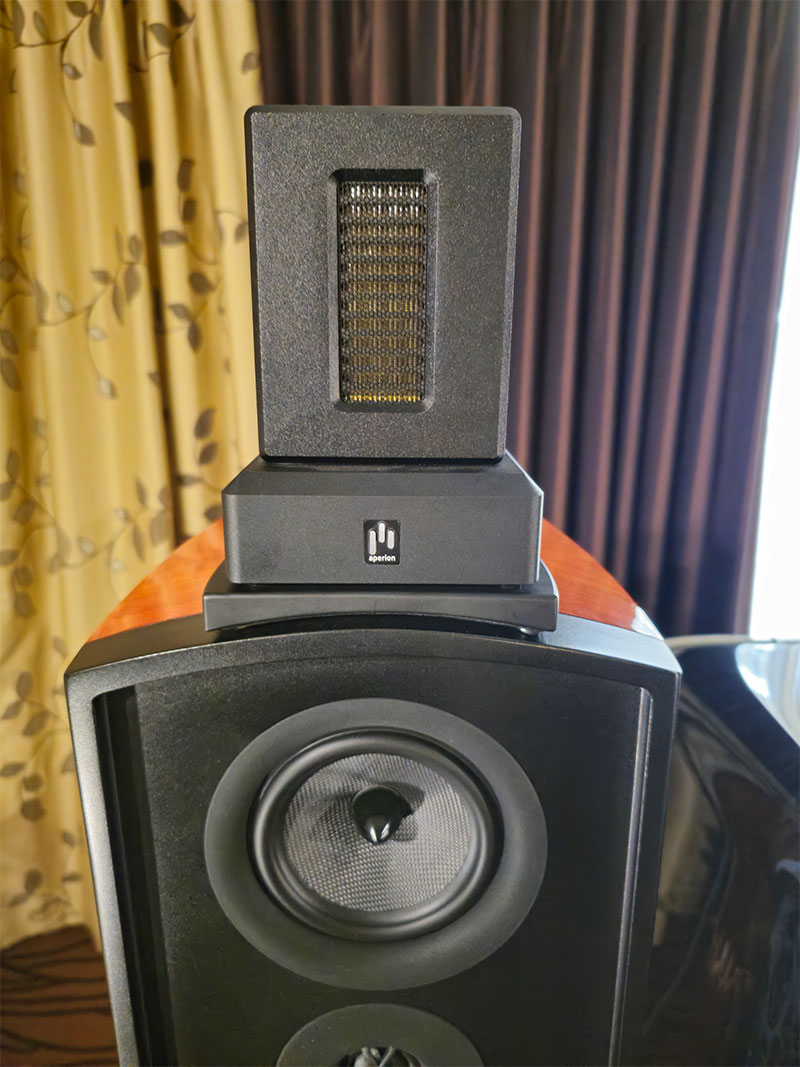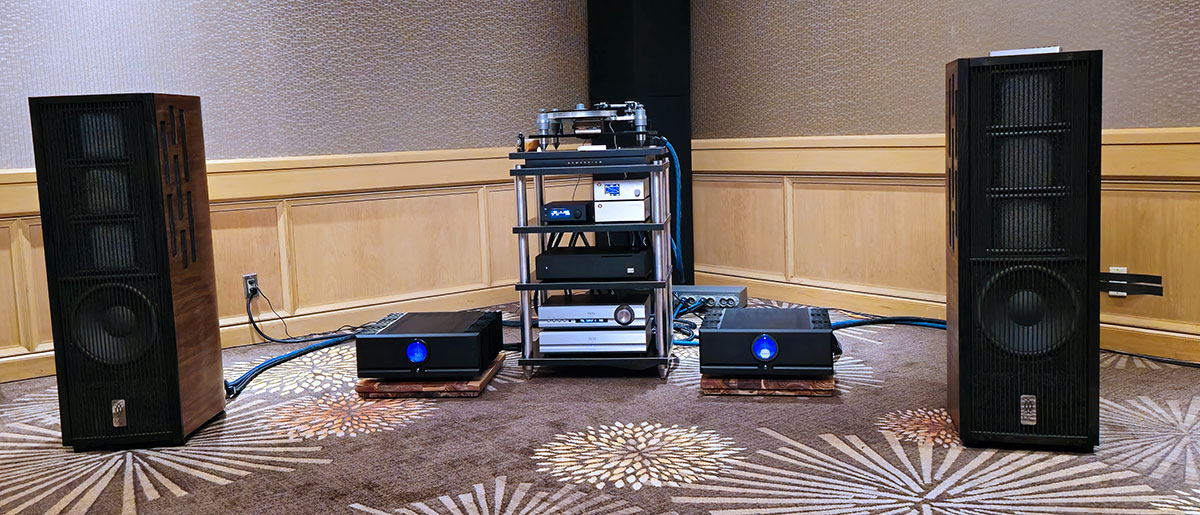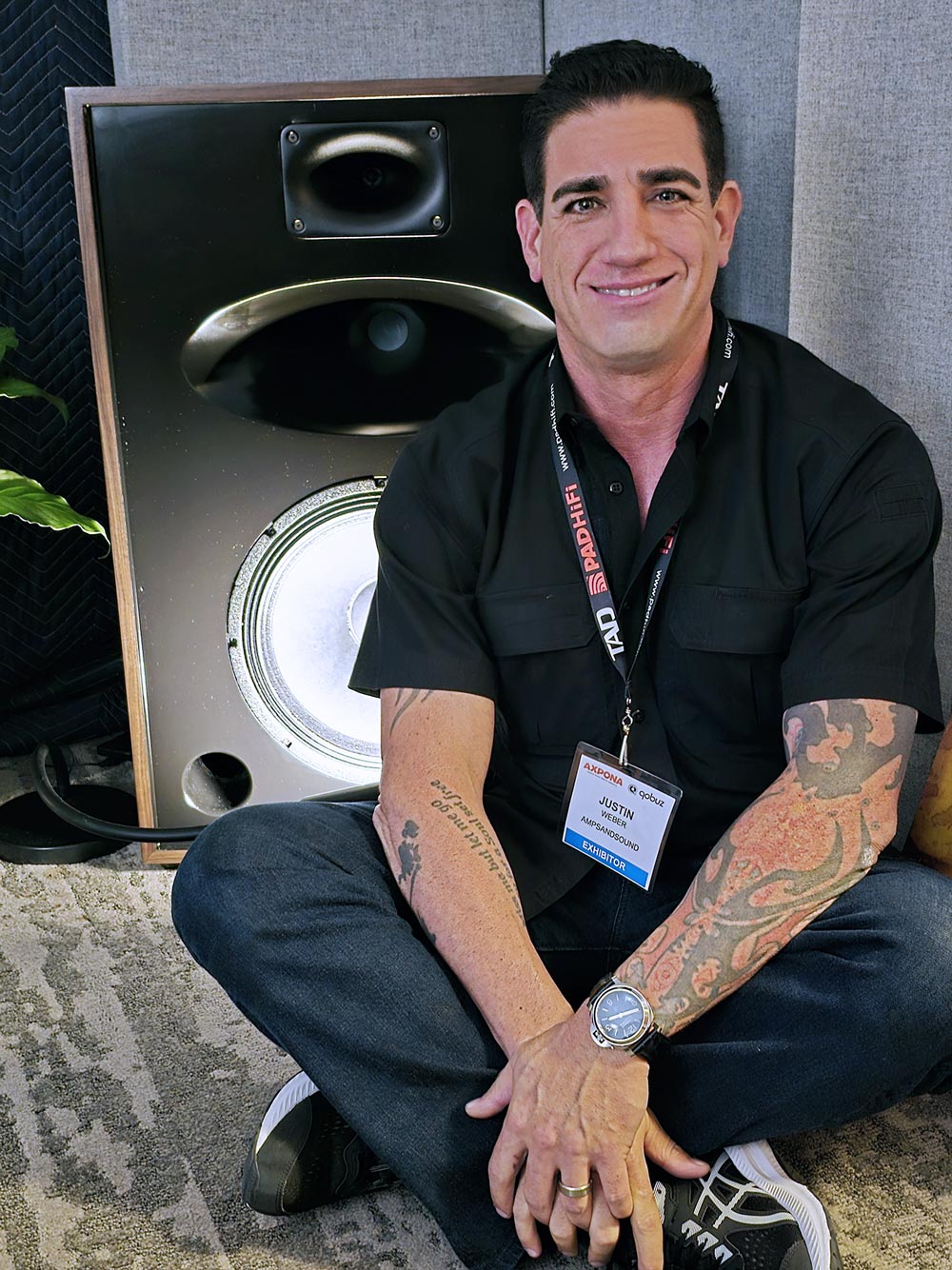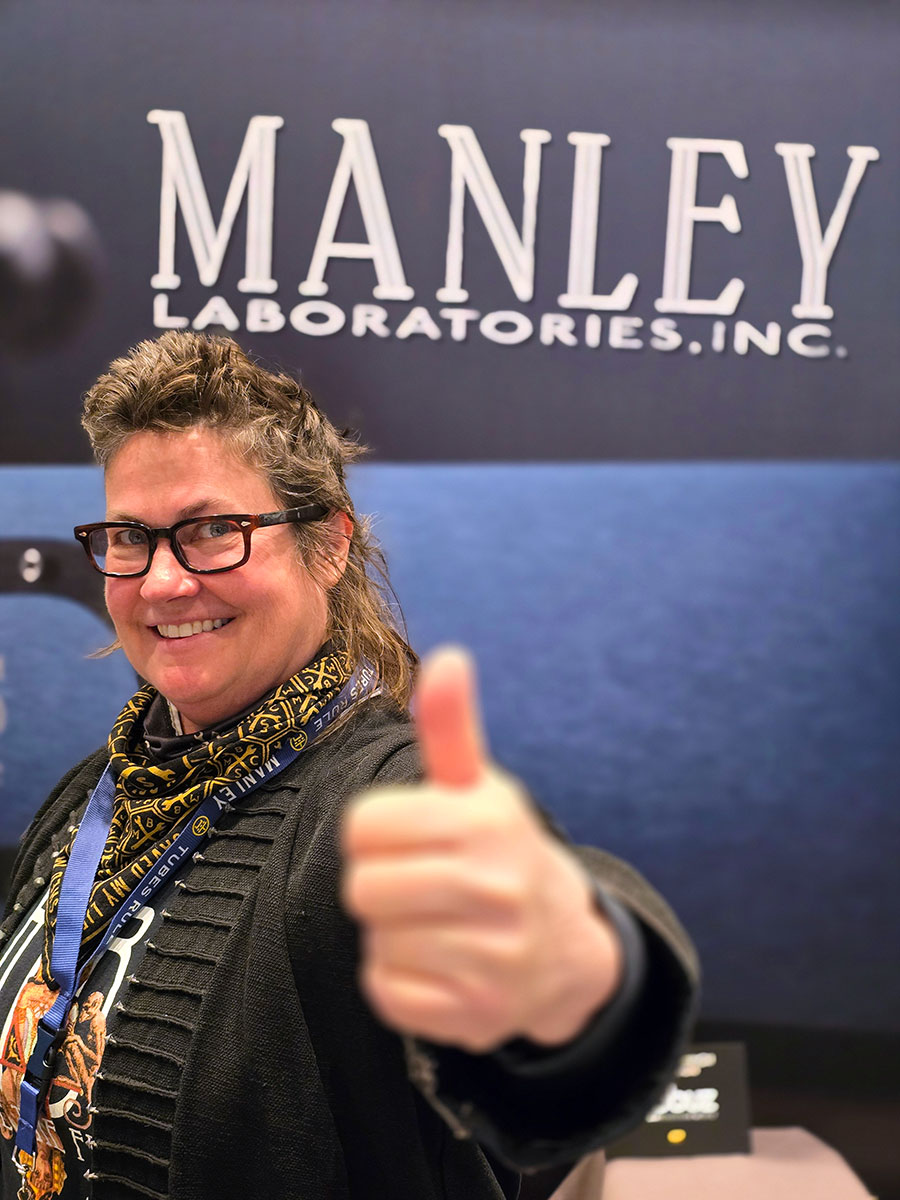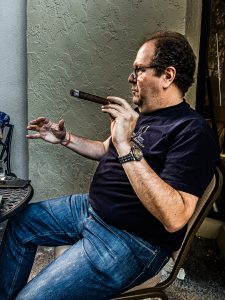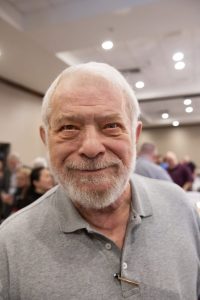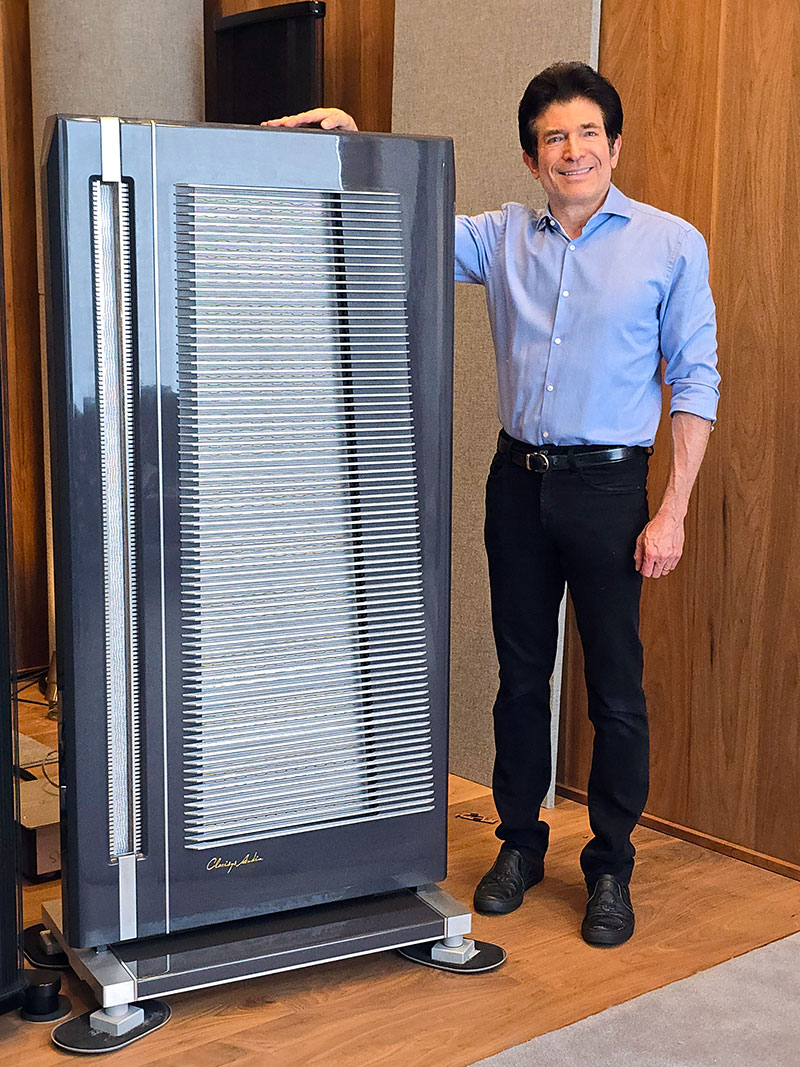
Ron Resnick shows off his pride and joy, The Clarisys Studio Plus Speakers.
As I was snaking my car up the ribbon of road leading high up in the Beverly Hills, I thought about my history with ribbon speakers. I had been invited by Ron Resnick to experience the listening room which comprises his new Audio Café business—the Southern California dealer for Clarisys Audio. I'll tell you, it doesn't suck being at the top of the Hills and looking down on Century City on a hazy Tuesday! Ron has a beautiful modernist house filled with colorful art with warm walnut flooring and paneling. And those Olympian views!
My goal was to hear the Clarisys speakers at their best. I have heard them at three shows, and while they were technically spectacular, I kind of missed an emotional connection with the music. I had assumed this was the result of show conditions, and the choices of ancillary electronics etc. I wanted to hear the juice that Ron squeezes out of these ribbon wonders.
I have a history with electrostatic, planar, and ribbon speakers. The first high end system I heard at 17 years old was anchored by a set of Quad ESL 63 electrostatics. It was so life-like, with a reach out and touch kind of palpability, it put me on the road to becoming a serious audiophile. Soon I had purchased my first pieces of 'real' gear, a Grace F9e cartridge and a pair of Magnepan MG1 planar speakers. I got really chummy with my local HiFi shop and I was offered the job of a lifetime, to help out with warehousing, system setup and installs. It was a seminal experience for me, although I don't think I was ever the ideal employee for them!
One day these massive wooden crates landed from Australia, and we set up the first Apogee Full Range Ribbon Loudspeakers, called The Apogee. I believe these were seven feet tall and close to five feet wide. These sounded amazing and I was hooked on the technology and sheer scale these speakers could produce. Later, I bought a pair of the Calipers, their smallest model, and later still the Duettas. The Clarisys speakers derive their technology and heritage directly from Apogee. I loved the Apogee sound, but they required powerful amps that could drive low resistance loads (close to 1-ohm for the originals!). Also, the smaller ones were fairly limited in their bass and volume output, the panels would bottom out when pushed too hard (the Duettas were better in this regard). This was not ideal for a hard living college student.
The redux on the Apogees: extremely hard to drive, they were very large and heavy, though the size was necessary to truly get them to be fully dynamic, scale crescendos, and output adequate bass. After owning them, I also came to hear a coloration to the bass, a tympani/plastic sound that affected drums and plucked basses, giving those instruments a bit of a homogenous quality. When setup correctly, they created a fully fleshed out deep soundstage that put you close to a full orchestra, or a live band in a way few other speakers could do. I would call this the ability to scale—to project a large and dynamic soundstage in a way that sounds like the real thing. They also sounded very open, unboxed, and uncolored (excepting the bass coloration issue).
This brings us to the Clarisys Studio Plus, which has been designed by passionate Apogee fans in Switzerland and Vietnam to overcome these limitations and to play nice with realistically sized modern audio systems. They are smaller than the original Apogees, yet they go deeper and louder on real world watts.
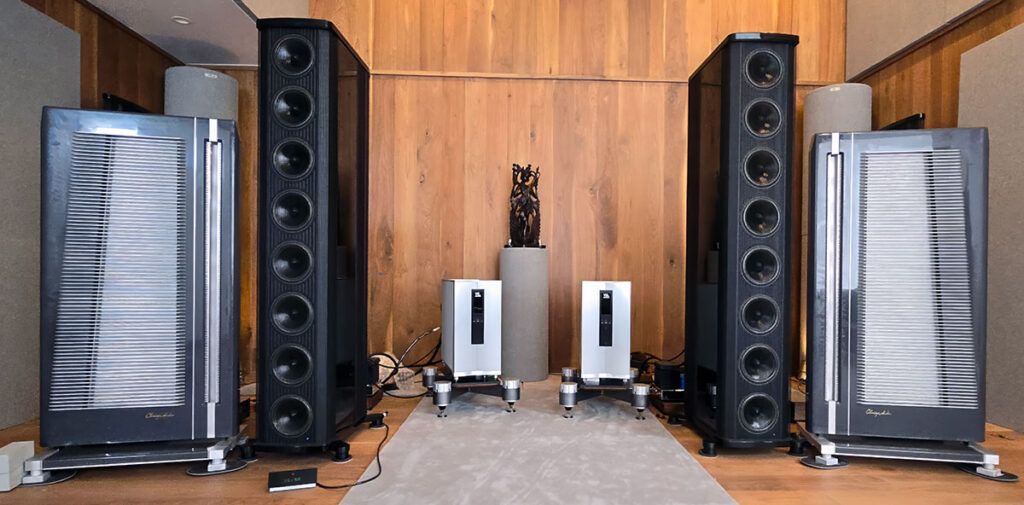
The listening room for Audio Café (the large Gryphon bass towers were not part of the demo)
So back to my visit to Audio Café. Ron has a beautifully appointed dedicated listening environment. The listening room is about 20 feet wide, 25 feet long, and 14 feet high. It has been acoustically treated flexibly to work with a large variety of speakers. The listening room holds the VTL Siegfried II monoblock amps, and the Clarisys Studio Plus loudspeakers with external passive crossovers. There is also a pair of woofer towers from the Gryphon Pendragon speaker system which were not playing during my demo.
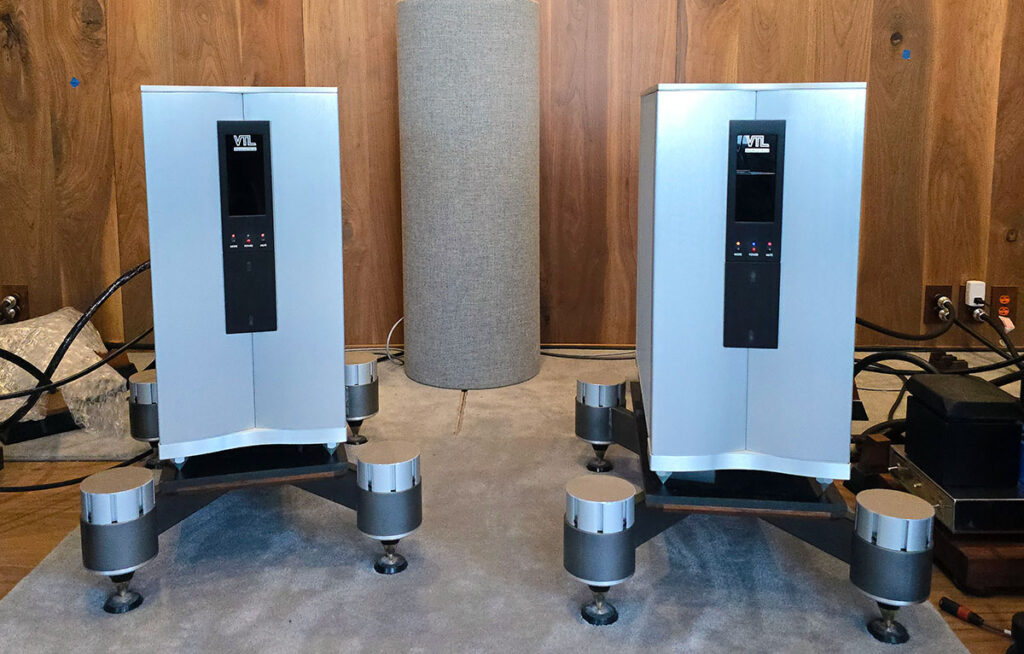
The VTL Siegfried II Monoblock Amps: serving up 330 watts each in triode mode for our demo (capable of 750 watts each in tetrode mode)
In the adjacent room Ron keeps his electronics. Analog consists of a Studer A820 reel-to-reel tape machine, a Brinkmann Balance turntable with a Reed 5T tonearm, and an Aesthetix Eclipse phono preamp with two power supplies (the vinyl system was offline during my visit). For digital there is an Innuos PULSEmini USB streamer fronting a LampizatOr Baltic 4 DAC. The streamer is powered by a Linear Tube Audio linear power supply. Preamp duties were handled by the VTL TL-7.5 Series III line stage preamplifier. Cabling is a mix of Cardas Clear Beyond interconnects and power cords, Cardas Clear Reflection interconnects and Iconoclast BAV power cords.
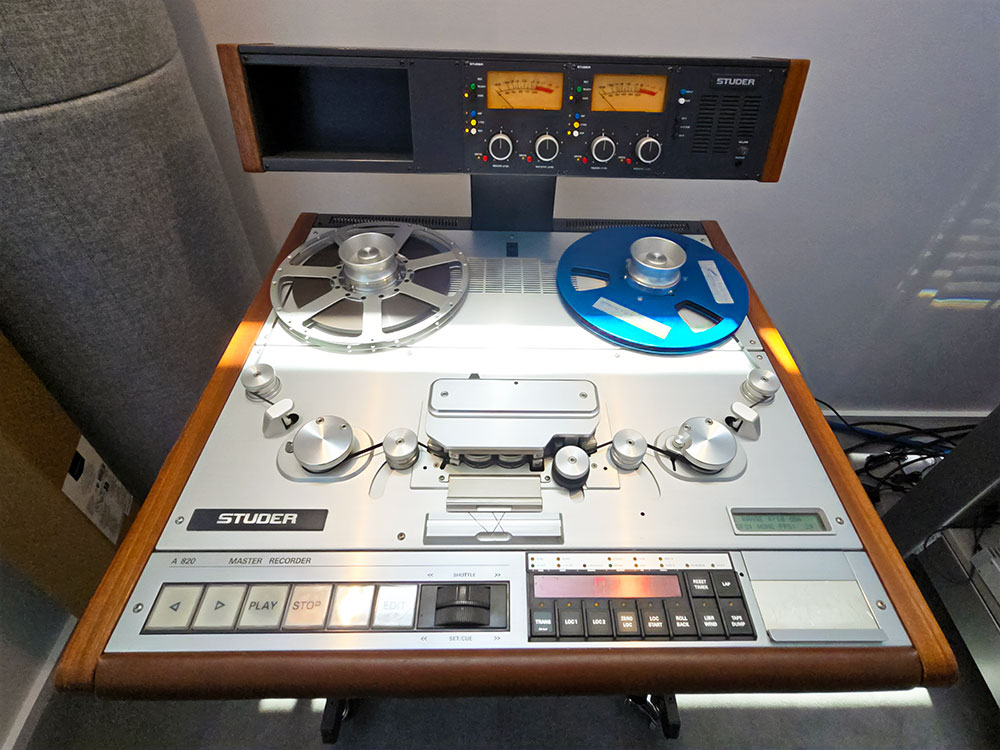
Magic Carpet Ride! The Studer A820 Tape Machine
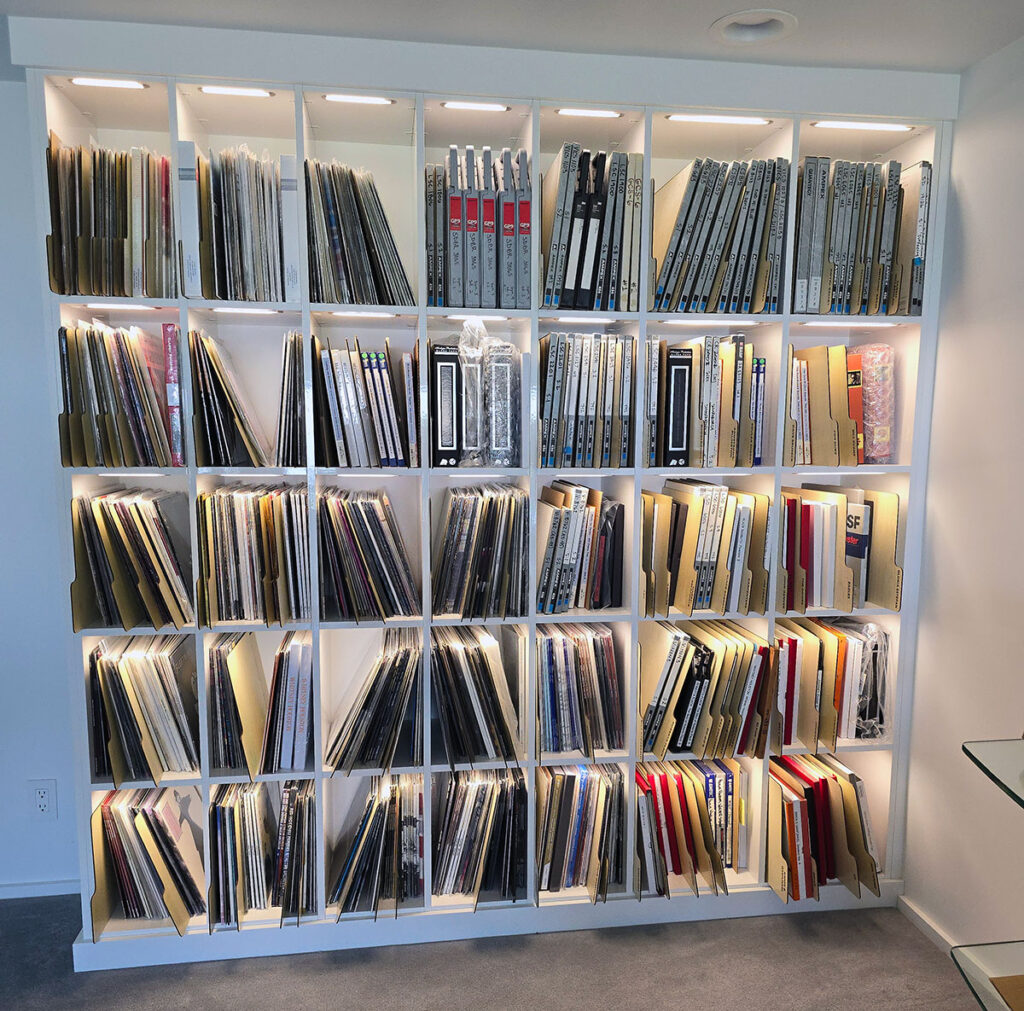
Magical Spell Weavers - records and tapes sourced from all over the world, including some incredibly rare master tapes
A loft above the equipment room stores Ron's records and tapes. Ron has been collecting some amazing media and has a large collection of reel to reel tapes that include various safety masters, production masters, and copies of some very well know recordings. Ron suggested a few tapes to start, and wow, was that a good suggestion! The recordings we played I know intimately. Ron played a Safety Master of The Bill Evans Trio's Waltz for Debbie.

The Bill Evans Trio, Waltz for Debbie
On the first notes of the first track, it was obvious that this was a source close to the master tape. The soundstage was large, going back deeply, with a mid-hall perspective. Bill's piano was solidly on the right with the bass on the left and the drum kit slightly left of center. The space between the instruments was clear, but not empty. The gentle cymbals on these tracks can get lost in the mix, but here they were full, and with more detail than I've heard before. The bass also had body and fullness with clearer finger work than I can remember. The piano had more layers of tone than I typically hear. Big, full, and present is how I would describe the sound.
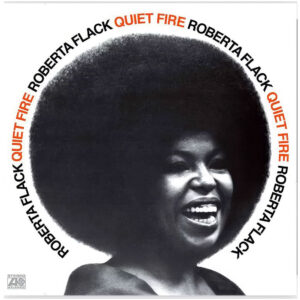
Next Ron pulled a tape that had me salivating! It was a production master of Roberta Flack's Quiet Fire, one of my favorite soul albums of all time. Putting on "Bridge over Troubled Water" transported me to 1971. The purity of Roberta's voice was clear, the fingering of the piano rendered with more details than I have heard. The choir was both very present and much further back in the soundstage than I have heard before. Next, I asked for "Sweet Bitter Love," which was rendered with delicacy and emotion. We listened to a variety of other music from the digital setup and the system kept up with my torture test selections.
In Ron's thoughtful and highly curated system with the Clarisys Studio Plus pumping out the tunes, my old impressions of the original Apogee sound were just that, OLD. The Clarisys Studio Plus speakers create a huge deep soundstage with a mid-hall perspective. Instruments are fleshy and dimensional. The speakers render a colorful tone and a certain juiciness that convey an emotional experience (this was no doubt assisted by the topflight VTL tube electronics). They were dynamic and scaled with crescendos in the way the best gear can. I found the overall sound uncolored and very even-handed tonally. It tended to being very slightly cool on the top end. The bass was big, textured, and detailed. There was no evidence of that plasticky feel on bass drums and bass plucks that I heard with the classic Apogees. Bass went as deep as I know the music tracks we played can go and no more.
I suspect the larger Clarisys speakers can do this with even more power and probably get down a few more hertz. It is interesting that the word resolution did not come up in my brain while I listened. The Studio Plus definitely had resolution to reveal what was dug up on those tapes, but it didn't sound forced or forward in the sonic landscape. Having heard the Clarisys Minuet a few times as shows, I think it is probably in the same ballpark sonically, though it didn't create as large a soundstage, go as deep or have the effortless dynamics of its bigger brother.
Ron has been a lifelong proponent of planar speakers, and he has been so converted to the Clarisys way of making music he has become a dealer for just this one product. Audio Café is a great space in an iconic location, and Ron is a gracious host.
Clarisys Studio Plus - $69,000 including passive external crossovers




